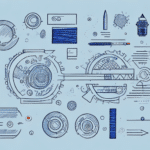Understanding Kitting Operations
Kitting operations play a crucial role in inventory management by grouping together multiple items needed for a specific task or project. This process streamlines assembly, reduces errors, and enhances overall efficiency within various industries.
What is Kitting?
At its core, kitting involves assembling all necessary components required for a particular task into a single package or kit. This could range from packaging all the parts needed to produce a product to gathering tools and supplies for a construction project. By having everything pre-packaged, businesses can save time and minimize the chances of missing or incorrect items during assembly or project execution.
History of Kitting
The concept of kitting is not new; it has been utilized in manufacturing industries for decades to simplify the assembly process. Over time, the practice has expanded to other sectors such as healthcare, e-commerce, and construction. The advancement of software solutions has further enhanced the efficiency and scalability of kitting operations, making them accessible to businesses of all sizes.
Benefits of Kitting Operations
Implementing kitting operations offers numerous advantages that can significantly impact a business's bottom line and operational efficiency.
Increased Efficiency
Kitting reduces the time required to gather materials by consolidating all necessary items into a single kit. According to a Supply Chain Digital report, businesses that implement kitting can see efficiency improvements of up to 20%.
Cost Savings
By purchasing materials in bulk and reducing waste, businesses can achieve substantial cost savings. Kitting ensures that only the necessary components are used, minimizing excess inventory and associated holding costs.
Improved Inventory Management
Kitting enhances inventory visibility and control. With all items accounted for in a kit, businesses can better track usage patterns and predict future inventory needs, thereby avoiding overstocking or stockouts.
Enhanced Quality Control
Grouping all necessary components ensures that each product or project has the correct parts, leading to higher quality outcomes and increased customer satisfaction.
Implementing a Successful Kitting Operation
To reap the benefits of kitting operations, businesses must carefully plan and execute their implementation strategy.
Planning and Setup
Identify the tasks or projects that would benefit most from kitting. Determine the necessary components for each kit and create detailed lists to ensure accuracy during assembly.
Choosing the Right Software
Automation can greatly enhance the efficiency of kitting operations. When selecting software, consider factors such as ease of use, integration capabilities, reporting functionalities, and scalability. Solutions like Orca Inventory offer robust features tailored for kitting needs.
Training Employees
Comprehensive training ensures that employees understand the kitting process and the importance of accuracy and efficiency. Ongoing training programs can help maintain high standards and adapt to any procedural changes.
Best Practices
- Regularly review and update kit contents to reflect current needs.
- Implement quality checks to ensure accuracy.
- Use labeling and organization systems to simplify kit assembly and usage.
Avoiding Common Mistakes in Kitting Operations
While kitting offers numerous benefits, it's essential to avoid common pitfalls that can undermine its effectiveness.
- Incorrect Item Selection: Ensure that only the necessary and correct items are included in each kit to prevent inefficiencies and errors.
- Underestimating Time and Effort: Accurately assess the resources required for packaging and assembling kits to avoid delays.
- Poor Inventory Tracking: Implement robust inventory management systems to maintain optimal stock levels and prevent shortages.
- Inadequate Training: Invest in thorough training programs to ensure that all employees are proficient in the kitting process.
Measuring Success: Key Performance Indicators (KPIs)
Tracking the performance of kitting operations is vital for continuous improvement and ensuring that the system delivers the desired outcomes.
- Kitting Accuracy Rate: Measures the percentage of kits assembled correctly. A high accuracy rate indicates effective quality control.
- Kitting Cycle Time: Tracks the time taken to assemble a kit from start to finish. Shorter cycle times reflect increased efficiency.
- Inventory Turnover Rate: Indicates how frequently inventory is sold and replaced over a specific period. Higher turnover rates can signify better inventory management.
- Lead Time from Order to Delivery: Measures the total time taken from receiving an order to delivering the final product to the customer.
Kitting vs Other Inventory Management Methods
While kitting is a powerful tool, it's essential to understand how it compares to other inventory management strategies to determine the best fit for your business.
Just-in-Time (JIT) Inventory Management
JIT focuses on reducing inventory levels by receiving goods only as they are needed in the production process. Unlike kitting, which groups items into kits, JIT emphasizes minimizing inventory to reduce holding costs.
First In, First Out (FIFO)
FIFO ensures that the oldest inventory items are used first, which is especially important for perishable goods. This method helps in maintaining product quality and reducing waste.
Vendor-Managed Inventory (VMI)
In VMI, suppliers manage the inventory levels for their products, ensuring optimal stock without the need for the company to handle the logistics. This approach can complement kitting by ensuring a steady supply of kit components.
Radio Frequency Identification (RFID) Inventory Management
RFID uses electromagnetic fields to automatically identify and track tags attached to objects. This technology enhances inventory accuracy and can be integrated with kitting operations for real-time tracking.
Industry Applications and Future Trends
Kitting operations are versatile and can be tailored to meet the needs of various industries. Additionally, emerging trends and innovations are shaping the future of kitting.
Industries Benefiting from Kitting Operations
- Manufacturing: Simplifies assembly processes and enhances production efficiency.
- Construction: Streamlines the organization of tools and materials for projects.
- Healthcare: Efficiently packages medical supplies and equipment for hospitals and clinics.
- E-commerce: Facilitates order fulfillment by grouping items for specific customer orders.
- Automotive: Organizes parts and components for vehicle assembly and maintenance.
- Aerospace and Defense: Manages complex assemblies and high-value components with precision.
Future Trends and Innovations
- Internet of Things (IoT): Enhances inventory tracking and automation within kitting operations.
- Artificial Intelligence (AI): Optimizes kit assembly processes and predicts inventory needs.
- Augmented Reality (AR) and Virtual Reality (VR): Assists in training and offers guided assembly procedures.
- Green Business Strategies: Focuses on sustainable packaging and waste reduction within kitting processes.
Staying abreast of these trends allows businesses to continuously improve their kitting operations, maintaining competitiveness in a dynamic market.
Conclusion
Kitting operations offer a strategic advantage for businesses seeking to enhance efficiency, reduce costs, and improve inventory management across various industries. By understanding the fundamentals of kitting, implementing best practices, and leveraging the latest technologies, companies can unlock significant operational benefits. Continuous evaluation and adaptation are key to ensuring that kitting systems remain effective and aligned with evolving business needs.




















